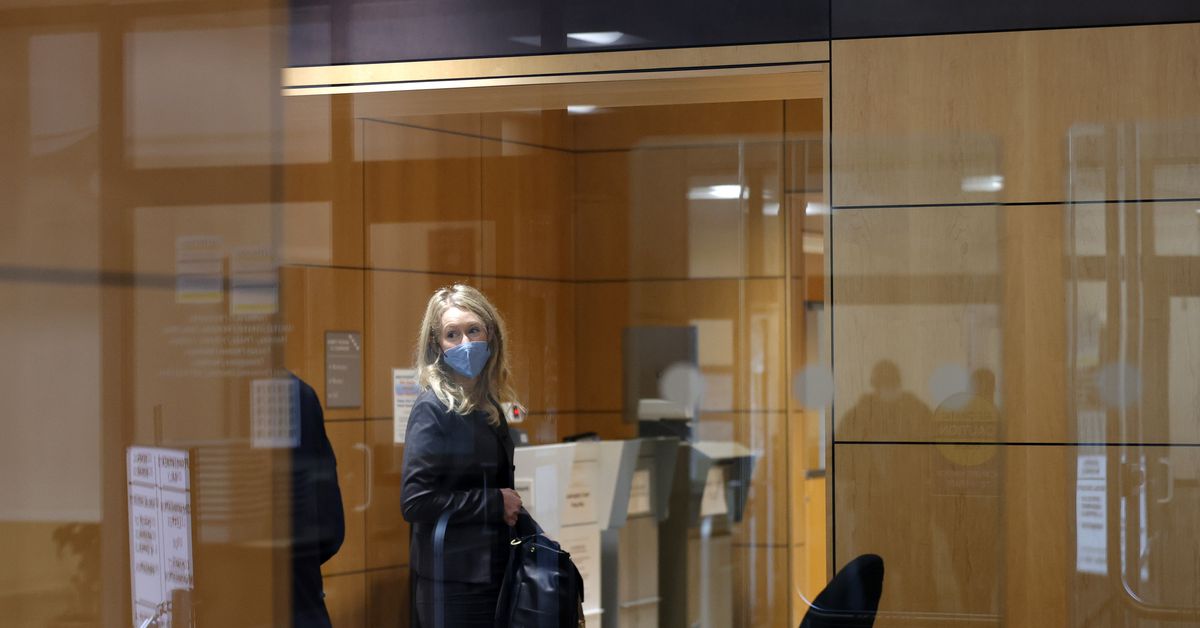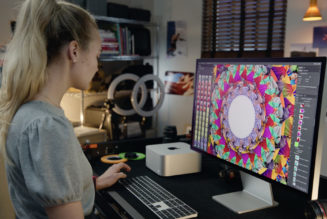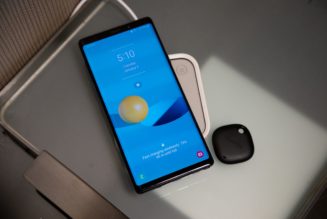
Elizabeth Holmes, her hair down and her makeup muted relative to her Theranos days, spelled her name for the court. After the prosecution rested its case in the morning, the defense called her as their third witness, about an hour before the end of the day. She wore a navy blazer with a white blouse — not one of the famous black turtlenecks has made an appearance in court during the months the case against her has dragged on.
Holmes is facing 11 counts of wire fraud from her time as founder and CEO of Theranos. Though her testimony today is the first time she’s spoken for herself, we’ve heard her voice already — in the recordings of Fortune journalist Roger Parloff. In those recordings, she lies confidently about her device’s capabilities. And the lies Parloff recorded were consistent with the lies her investors testified that she told them.
I do not think I am the only person who’s wondered how she’ll explain this. Now, we are going to find out.
So far Holmes hasn’t said much — we’ve learned about her education, the time she spent at Stanford, and that she dropped out to form Theranos. When her testimony ended today, we were still in 2006, well before the period the government alleges any fraud took place, which means most of the juicy stuff will have to wait until next week.
Holmes was cheerful, smiling at her attorney, Kevin Downey. She seemed relaxed and focused. Everyone I know has asked me about her voice. For what it’s worth, the most obnoxious part of The Voice Discourse is that most of these writers have no musical training. She is not and could never have been “baritone,” as Inc wrote — she’s not even a tenor! — and the idea that she’d go up “several octaves” when she speaks normally, as John Carreyrou writes in Bad Blood, suggests a “real” pitch higher than the speaking voice of Kristen Chenoweth. That is nonsense.
Holmes sounds like a normal alto to me, though she has a habit of dropping her voice to punch words she wants to emphasize. Then, she sounds like she has a cold, or perhaps, as Jezebel put it, like she’s using her “impression of a stupid man” voice. If it’s an affectation, it’s one she’s had so long that it’s natural to her now. In any event, most of her speech isn’t at the bottom of her range.
But the voice is part of the famous Holmes persona, which I expect we will be hearing more about in the coming days. The defense has indicated that they expect to continue questioning her all next week; if the prosecution’s cross-exam is shorter than two days, I will be surprised.
The story Holmes told in her testimony is well-known. She dropped out of Stanford and used the rest of the money her parents had saved from her college education, as well as some debt and some money from family friends, to found a company called Real-Time Cures. She later changed the name to Theranos.
Originally, the idea was to create a pill or patch, one that would analyze a person’s blood, allowing for more-precise medication dosing. But people seemed more interested in a tabletop device for blood analysis, rather than a pill or patch, so she switched her focus.
She raised money from Don Lucas, an investor best known for his association with Oracle, and Larry Ellison, among others. Lucas wanted to speak to some of the pharmaceutical companies Theranos had been working with as part of his due diligence, so we were shown a 2005 email where Holmes introduced Lucas to someone she’d been working with at Pfizer. We also saw the reply: that he’d be happy to talk to Lucas.
With the money Holmes raised, she created a device called Theranos 1.0, a photo of which was displayed for the courtroom, and which to me looked like someone had attached a thick antenna to a gray printer.
During that time, the business plan was to work with drug companies on their clinical trials. She spoke to Pfizer, GlaxoSmithKline, Novartis, and Bristol Myers Squibb. Theranos signed agreements with GSK in September 2006, and with Pfizer in November 2006. The company also did demos for Novartis and Eli Lilly.
We were even shown an email from Holmes to the entire staff at Theranos about the Novartis demo. In the November 19, 2006 email, she wrote, “We nailed this one. You all did an incredible job in making this happen — this is the Theranos way. We are on a roll to do what we need to do next month and in ‘07.”
We also saw a 2006 email from Holmes to Bob Grady, a partner at the Carlyle Group, when Holmes was raising money. In it, she lists people at Pfizer, GlaxoSmithKline, and Novartis he can talk to if he wants to confirm their work with Theranos. Not all investors asked for this information, she testified.
And then we broke for the day. The period in which the government alleges fraud took place is still ahead of us. We know from the opening statements Holmes may blame Sunny Balwani, her co-defendant who is being tried separately; the defense suggested that her mistake was trusting him too much.
She may also allege that he abused her. In court filings unsealed in August, she alleged that he controlled what she ate, how she dressed, and all her communications. (Balwani denies this.) The abuse allegations explain why the two are being tried separately; an expert on abusive relationships, Mindy Mechanic, is on the defense’s witness list, though she may not be called.
In her coming testimony, which I expect to be lengthy, I look forward to her explanation for the remarkably consistent lies several people testified to — that Theranos devices were used in Afghanistan and on military helicopters, that Theranos devices could perform more than 200 tests, and that the company did not use competitors’ machines for tests. I am particularly interested in the coming cross-examination, when the government can use her extensive body of statements, including those in the press, to ask her questions.
But right now, we’ve just heard the story of a fledgling startup — one that would not be interesting or unusual if it were not for how the company ended.









